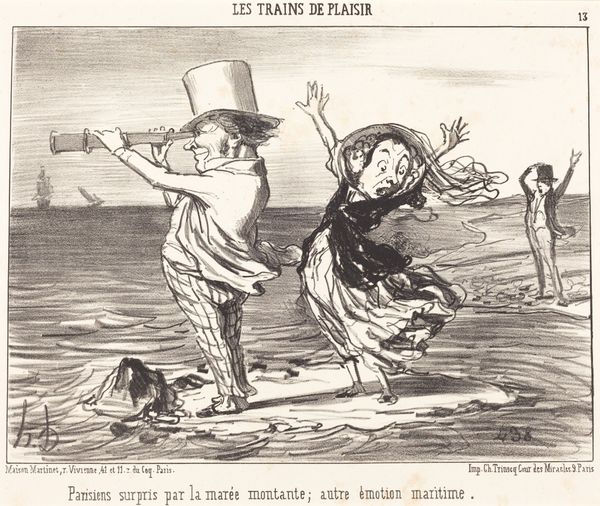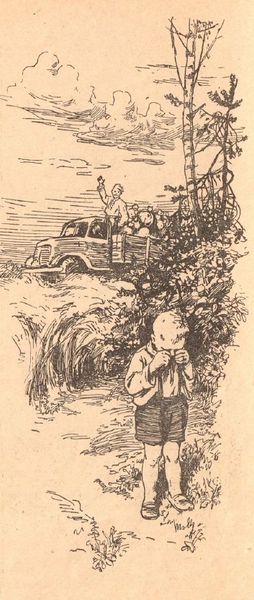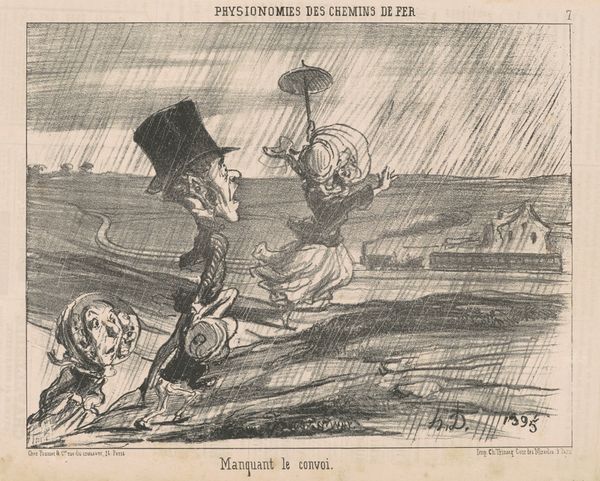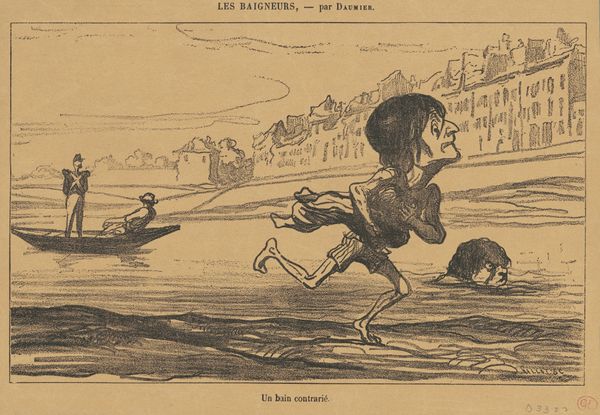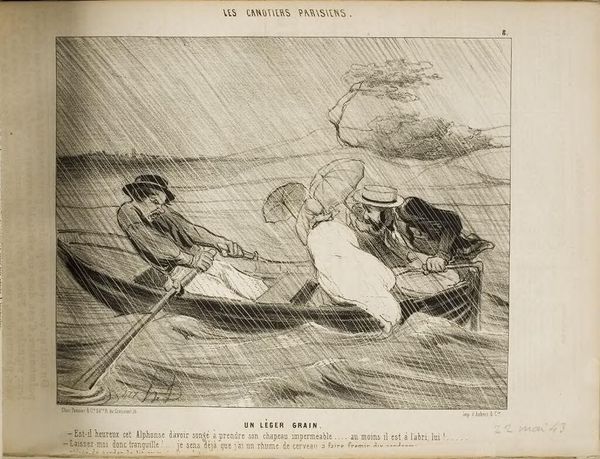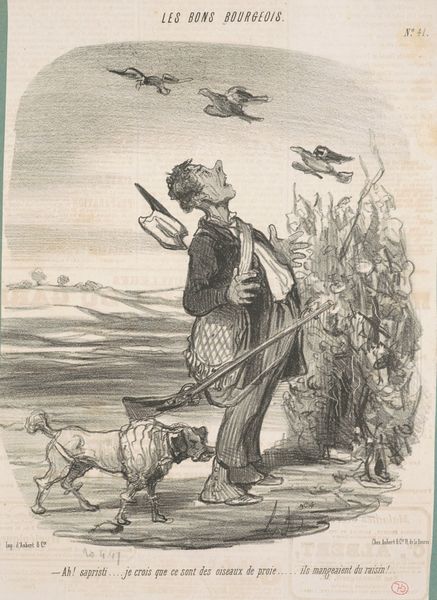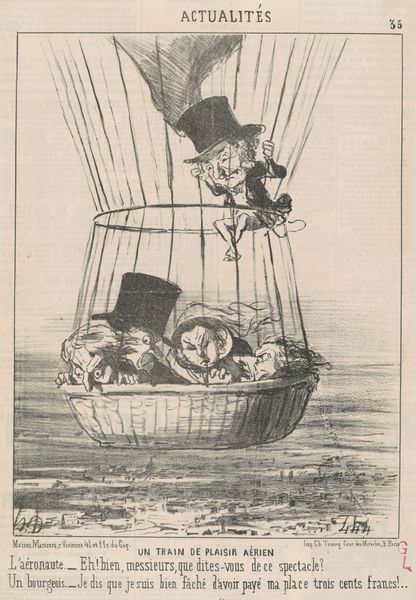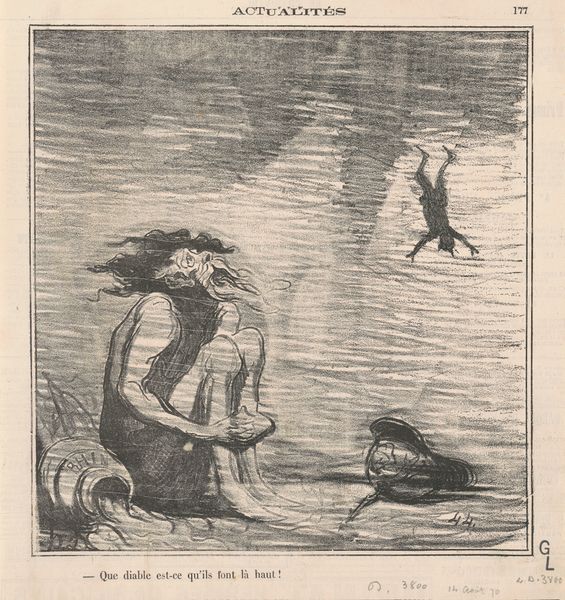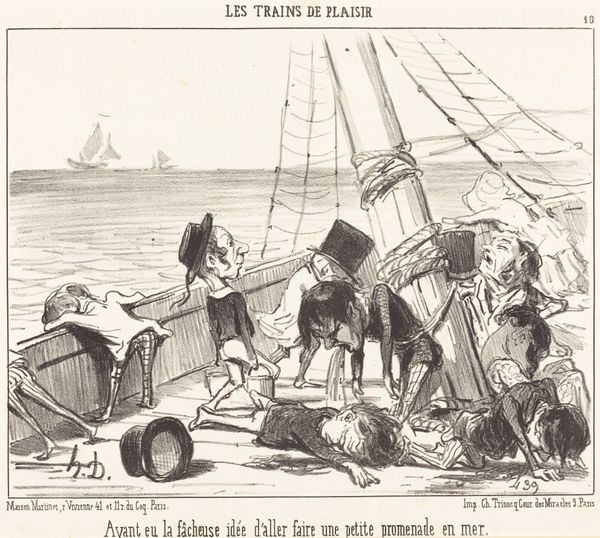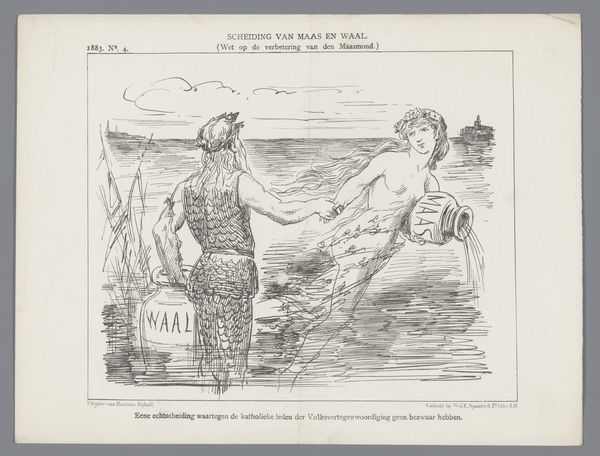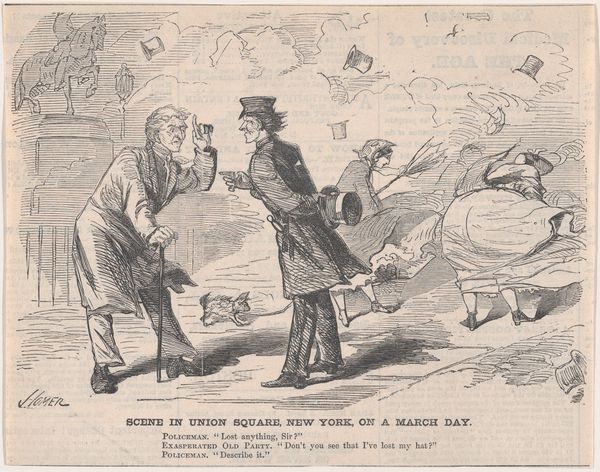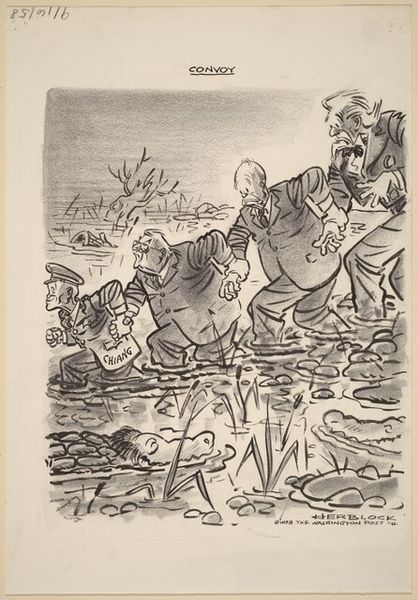
drawing, print, woodcut
#
drawing
#
narrative-art
# print
#
pen illustration
#
landscape
#
personal sketchbook
#
woodcut
#
comic
Dimensions: image: 229 x 368 mm paper: 349 x 521 mm
Copyright: National Gallery of Art: CC0 1.0
Editor: So this is "Running Away to Sea," a print, probably a woodcut or linocut, by John Held Jr., from the 1920s. The image itself is pretty simple, a young boy running towards a ship. What stands out to me is the contrast and the seeming simplicity of the process; it feels mass-producible. What's your take on it? Curator: Well, it's fascinating to consider this print through a materialist lens. It makes me consider the social and economic context in which it was made and circulated. Held's use of woodcut, a relatively accessible printmaking technique, speaks volumes. What do you think that says about the artist's intention? Editor: That's a good point, the deliberate choice of such a simple printing method means the art could have a wider audience due to cost, right? So this imagery of a young boy with all his belongings speaks to something about consumerism maybe? Curator: Exactly! Think about the accessibility of print media in the 1920s and the rising consumer culture. The "boy running away to sea" motif becomes a commodity, reproduced and distributed widely. Was it sold in newspapers, do you think? Maybe reproduced to encourage ideas of self-determination? What does this reproduction tell us about the consumption of escapism? Editor: I see, so we're not just looking at the image, but the journey of the physical object and what that represents! Like, who was consuming it, and what did it *mean* that they could consume art so easily. It makes you consider labor as part of that artistic output too. Curator: Precisely. And that labor isn't just Held's labor in creating the image, but the labor of the people involved in its production, distribution, and consumption. A simple seeming print becomes an artifact rich with economic and social implications, doesn't it? Editor: Definitely changes how I see a basic image! It's not *just* a picture. Curator: Agreed.
Comments
No comments
Be the first to comment and join the conversation on the ultimate creative platform.
